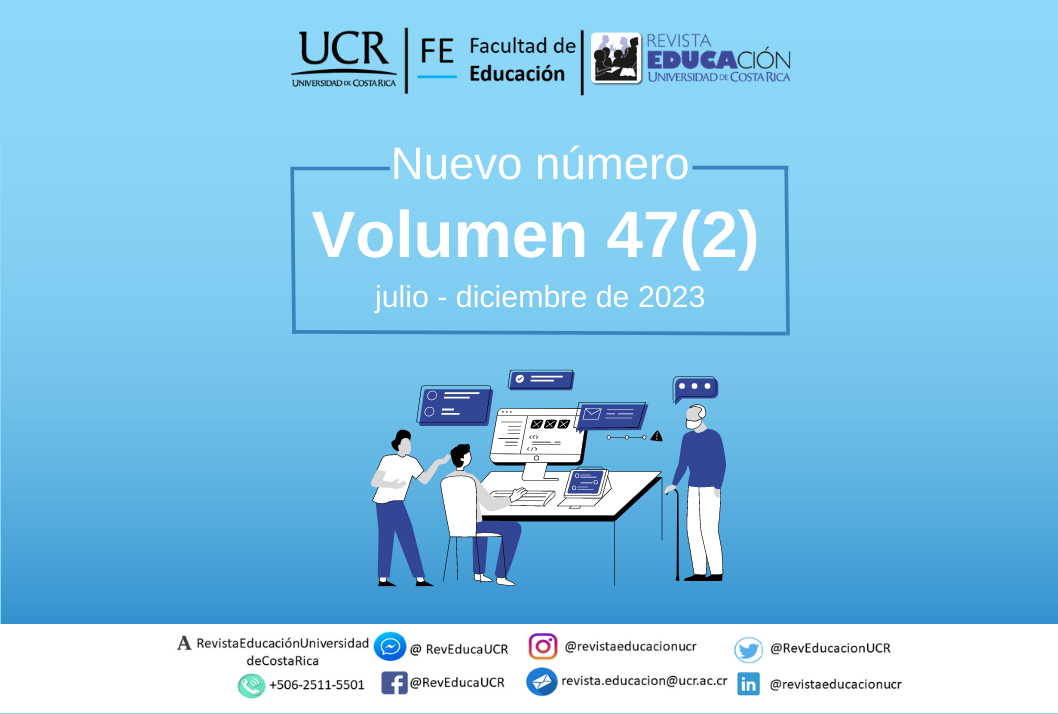Abstract
The objective of the research consisted of developing a strategy through which aspiring police officers of the Rafael Reyes Police School could acquire knowledge and adopt practices to prevent cybercrime, specifically, phishing, vishing, smishing, impersonation, and scamming. This strategy aimed to strengthen the police service by ensuring that students acquire basic competencies in this field and are familiar with the procedures to follow in the event of being a victim or assisting affected individuals. The research employed a mixed-method approach, combining qualitative and quantitative elements. Initially, the researchers surveyed 220 students enrolled in the professional police service technician program to identify the most common cybercrimes that have affected the academic community. Additionally, by using the Virtual CAI (Cyber Incidents) service, the investigators identified the most reported crimes in the country during 2022. Moreover, statistical records of criminal activities registered in the Statistical Criminal and Contraventional Information System of the National Police of Colombia (SIEDCO) were also consulted, focusing on the five most frequently reported modalities. Finally, the authors sought to develop competencies in aspiring police officers to address cybercrimes by designing a mobile application that provides information on these felonies, protective measures, online tools, and instructions to file an official complaint. This case study highlighted the need for educational institutions, especially police training institutions, to prioritize cybersecurity and include topics of prevention and digital safety in their curriculum.
References
Acens Technologies. (2020). Qué es el Phishing y cómo protegerse. https://www.acens.com/wp-content/images/2014/10/wp-phising-acens.pdf
Barbieri, C. (2021). Tú y tu empresa están en peligro y no lo sabes. https://oxfordusa.com/es/tu-y-tu-empresa-estan-en-peligro-y-no-lo-sabes/
Bryant, R., Cockcroft, T., Tong, S. y Wood, D. (2014). The developing relationship between universities and police services: the past and present situation. [La relación en desarrollo entre las universidades y los servicios policiales: la situación pasada y presente]. En J. Brown, Police Training and Education: Past, present and future (pp.383-397).
Cisco. (2022). What Is Cybersecurity? [¿Qué es la ciberseguridad?] https://www.cisco.com/c/en/us/products/security/what-is-cybersecurity.html
Cockcroft, T., Shan-A-Khuda, M., Cliffe, Z., Trevorrow, P. (2018). Police Cybercrime Training: Perceptions, Pedagogy and Policy [Formación policial en ciberdelincuencia: percepciones, pedagogía y política]. A Journal of policy and practice, 15(1), 15-33. https://doi.org/10.1093/police/pay078
Europol. (2020). Fraude del CEO. https://www.europol.europa.eu/sites/default/files/documents/colombia_1.pdf
Fiscalía General de la Nación (2023). Estadística de denuncias por delitos. https://www.fiscalia.gov.co/colombia/gestion/estadisticas/delitos/
Forcepoint. (2021). What is Malware? Malware Defined, Explained, and Explored [¿Qué es el malware? Malware definido, explicado y explorado]. https://www.forcepoint.com/es/cyber-edu/malware
Garzón, J. O. y Cuero, K. S. (2023). Una mirada a la cibercriminalidad en Colombia y su asimilación con los delitos de impacto. Revista Criminalidad, 64(3), 203-225. https://doi.org/https://doi.org/10.47741/17943108.373
Goga, O., Venkatadri, G. y Gummadi, K. (2021). Exposing Impersonation Attacks [Exposición de ataques de suplantación de identidad]. https://www.lix.polytechnique.fr/~goga/papers/impers_cosn14.pdf
Internet Rights y Principles Coalition. (2019). Carta de derechos humanos y principios para internet. Internet Governance Forum [Foro de Gobernanza de Internet]. https://drive.google.com/file/d/1REWtM5NmfClVDWcHBvEcHTyBGm7fgHd9/view
Interpol. (2022). Guide for developing law enforcement training strategies on cybercrime and electronic evidence [Guía para el desarrollo de estrategias de formación policial sobre ciberdelincuencia y pruebas electrónicas]. https://rm.coe.int/guide-for-developing-training-strategies-final/1680a62c72
Internet Crime Complaint Center. (2022). Internet Crime Report [Reporte de crímenes en internet].
https://www.ic3.gov/Media/PDF/AnnualReport/2022_IC3Report.pdf
Kaspersky. (2023). ¿Qué es la ciberseguridad?. https://latam.kaspersky.com/resource-center/definitions/what-is-cyber-security
Martínez, C., Cruz, Y., Cruz, T., Álvarez, M. (2018). Seguridad por capas frenar ataques de Smishing. Dominio de las ciencias, 4(1), 115-130. http://dominiodelasciencias.com/ojs/index.php/es/article/view/726
National Initiative for Cybersecurity Education [NICE]. (2016). Strategic Plan. National initiative for cybersecurity education [Plan estratégico. Iniciativa nacional para la educación en ciberseguridad]. NICE. https://www.nist.gov/system/files/documents/2020/10/26/2012_NICE-strategic-plan_withcover.pdf
Ospina, M. R. y Sanabria, P. E. (2023). Desafíos nacionales frente a la ciberseguridad en el escenario global: un análisis para Colombia. Revista criminalidad, 62(2), 199-212.
https://dialnet.unirioja.es/servlet/articulo?codigo=7667839
Rosgaby, K. (2022). Estadísticas de la situación digital de Colombia en el 2021-2022. https://bit.ly/3L8SS2r
Seger, A. (2012). Cybercrime strategies [Estrategias de ciberdelincuencia]. Council of Europe. https://rm.coe.int/16802fa3e1
Villalobos, H. (2020). El desarrollo tecnológico en materia policial: una receta de éxito para la prevención del delito. Revista de relaciones internacionales, estrategia y seguridad. 15(1), 79-97. https://revistas.unimilitar.edu.co/index.php/ries/article/view/4243
We are social. (2022). Más de 5 mil millones de personas ya usan internet. https://bit.ly/3YA0Swr
Wydra, C. (2015). Educating the Technology Officer of the Future: A Needs Analysis [Educando al Oficial de Tecnología del Futuro: Un Análisis de Necesidades]. Revista Issues in Information Systems, 16(4), 224-231. https://iacis.org/iis/2015/4_iis_2015_224-231.pdf
Comments

This work is licensed under a Creative Commons Attribution-NonCommercial-NoDerivatives 3.0 Unported License.
Copyright (c) 2023 Revista Educación - Journal of Education



